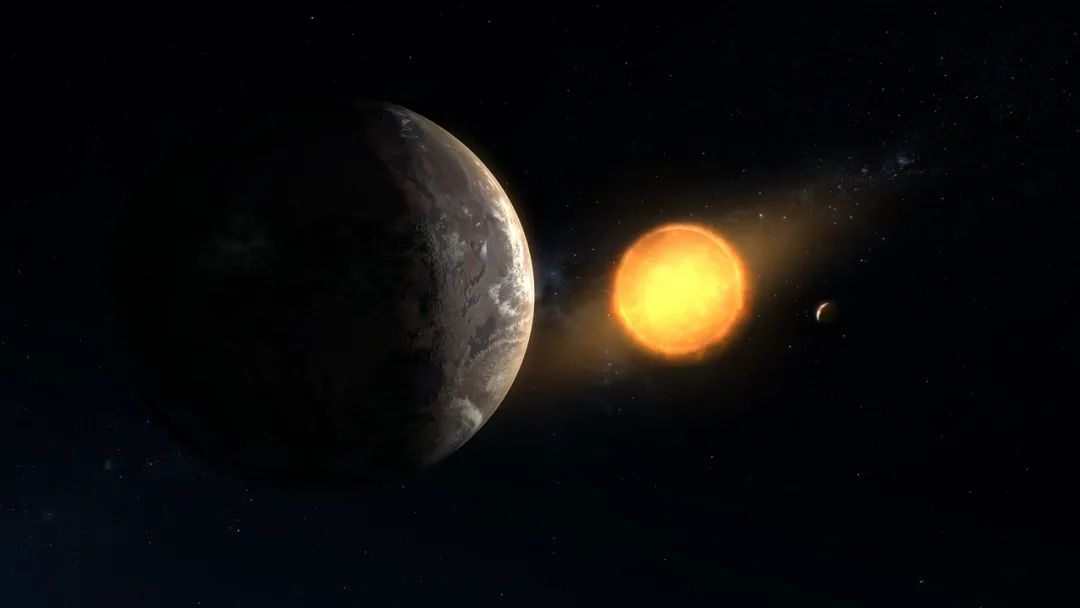
Although the first hunter of exoplanets has been retired for more than a year, it has left a rich treasure for mankind. The huge amount of data collected by the Kepler planetary probe over a decade is still shining brightly, surprising us from time to time.
Astronomers have discovered an exoplanet that is similar in size and temperature to our planet, just 300 light-years away.
The terrestrial planet was named Kepler-1649c. Kepler: Represents the Kepler Planet Detector, 1649 stands for the exoplanet number 1649, c represents the star's second planet (the first planet is represented by the lowercase letter b) Astronomers believe that the first planet is likely to exist, although it has not yet been discovered. Because observational data show that there is a resonance phenomenon in the orbits of two planets.
This Earth-like Kepler-1649c is only a little larger than our parent planet Earth, that is, 1.06 times the volume of the Earth, and receives about 75% of the light that the Earth gets from the Sun. This means that the exoplanet may have a surface temperature similar to Earth's. It is also located in the habitable zone of the star system. As long as the distance is right, liquid water may exist, which also means that it is possible to support the birth and evolution of life.
But it cannot be ignored that Kepler-1649c orbits a red dwarf star that is much smaller and much cooler than the Sun. Because red dwarfs are very dark, the habitable zone is also very close. The planet is much closer to the parent star than Earth is to the Sun, orbiting the parent star every 19.5 Earth days. This means that it is susceptible to stellar flares that threaten any potential life. However, no flares have been observed so far.
At present, the actual livability of Kepler-1649c is difficult to find out. For example, astronomers know nothing about its atmosphere. We know that the composition and thickness of the Earth's atmosphere directly affect the surface temperature and the presence or absence of liquid water. In addition, red dwarfs typically release powerful flares frequently, especially when they are young and vigorous, so even planets in the habitable zone may soon be stripped of their atmospheres.
The study was published April 15 in the online edition of the Astrophysical Journal Letters. Interestingly, the planet was almost dropped by Pass. At first, astronomers used a Robovetter intelligent algorithm to process huge amounts of Kepler data, which may have been misjudged by an artificial intelligence algorithm, classifying the planet as an exoplanet. Fortunately, there is a second line of defense, and the artificial analysis and screening phase confirms this Earth-like planet.
At present, astronomers have included the planet in the "Earth Brotherhood Club", some of which are more famous: TRAPPIST-1f and Teegarden c, which are similar in size to Earth. Temperatures are closer to Earth's TRAPPIST-1D and TOI 700d.
Since the discovery of the first exoplanet in 1992, as of April 2 this year, astronomers have discovered a total of 4,241 exoplanets, of which two-thirds (2,681) were discovered by Kepler in 2009-2018. Astronomers estimate that about 20-25 percent of the Milky Way's roughly 200 billion stars exist in terrestrial planets in the habitable zone, and an estimated 11 billion new Earth homes are suitable for human habitability.
As exoplanets continue to be discovered, interest in the search for extraterrestrial life has also been sparked. It is expected that Kepler's successor, the second generation of exoplanet hunterS, TESS, and the future launch of the James Webb Space Telescope will be able to discover more and more accurate exoplanets, terrestrial planets, and habitable Earths.